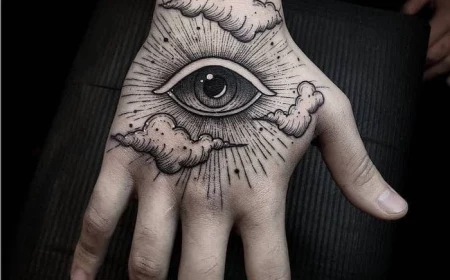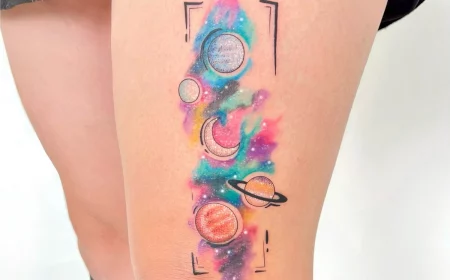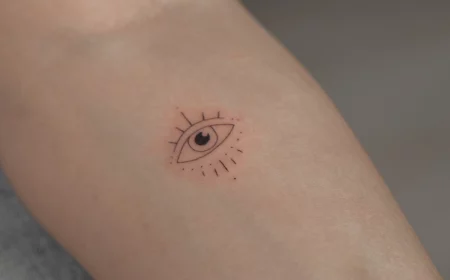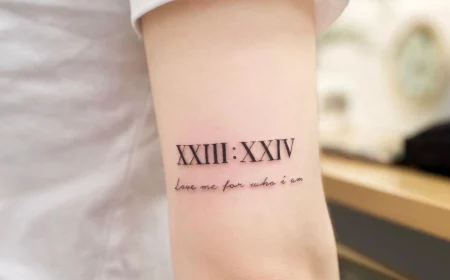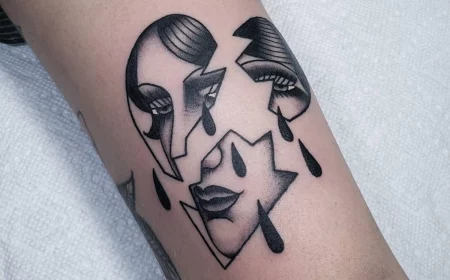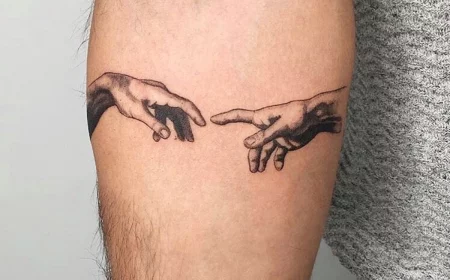Thinking About a Chest Tattoo? Here’s What You *Actually* Need to Know
So, you’re thinking about getting a chest tattoo. Good choice. It’s one of the most powerful and beautiful placements out there, a spot that can be deeply personal or a bold statement piece. As someone who’s been in the tattoo world for a long time, I’ve seen these pieces evolve from niche to mainstream, and I get why. They just work, framing the body’s natural lines in a way few other tattoos can.
In this article
But let’s be real. A chest tattoo is a major commitment. It’s not just about picking a pretty design you saw online. We need to talk about the things that really matter: how your own anatomy changes the game, what the healing process is really like, and how to spot an artist who will give you something amazing for life, not just for the first Instagram photo. I’ve seen way too many people rush in and regret it, so let’s make sure you get this 100% right.
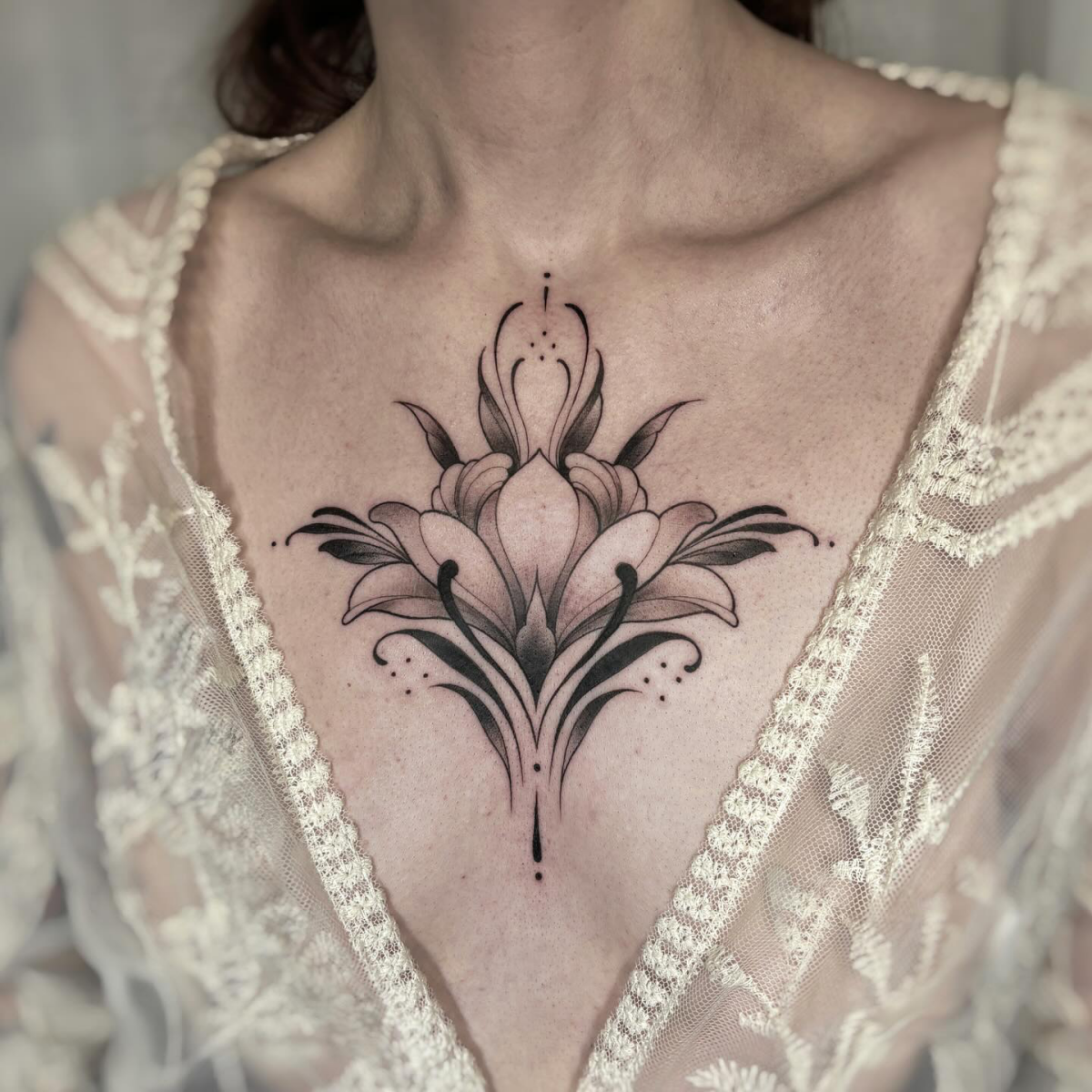
Your Body is the Blueprint
Before we even get to a design, you have to understand the canvas—your chest. It’s not a flat piece of paper. It’s a dynamic landscape of bone, muscle, and sensitive skin, and a great artist knows how to work with it, not against it.
The Bony Bits: Sternum & Collarbones
Okay, let’s talk about the elephant in the room: the bones. The two main players here are your sternum (the breastbone right down the middle) and your clavicles (the collarbones up top). Tattooing over bone is a whole different ball game.
The skin over your sternum is incredibly thin. When the needle gets going, the vibration travels right through the bone. Honestly, most people describe it as a deep, rattling sensation that’s more unnerving than the pain itself. It’s consistently ranked as one of the most intense spots to get tattooed. Designs here require a steady hand from the artist and, frankly, some real grit from you. We always plan for more breaks when working on this area.
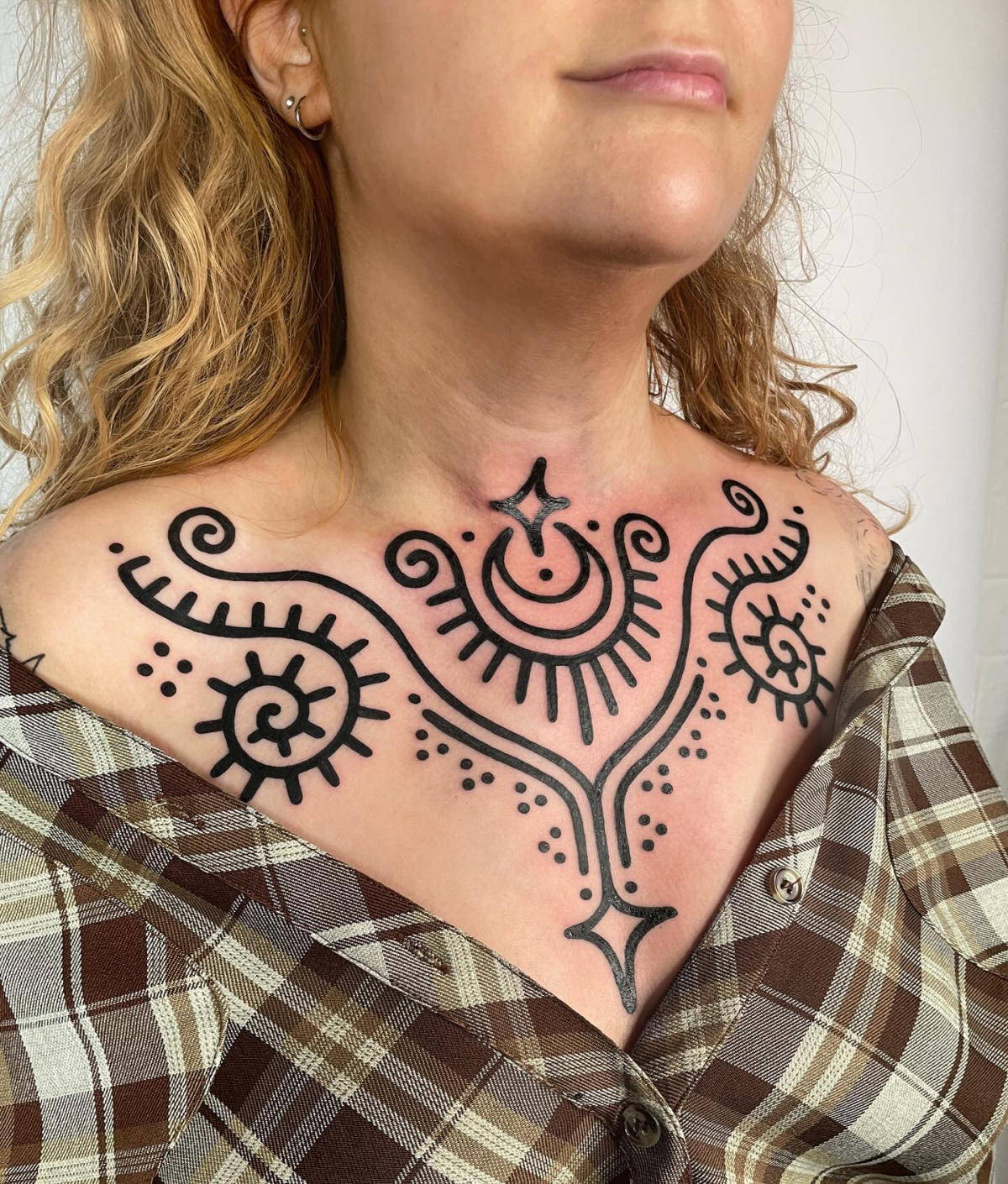
Your collarbones are a similar story. The pain is sharp and right on the surface. The real challenge here, from an artist’s perspective, is making sure the design looks straight and balanced no matter how you move. A good pro will check the stencil while you’re sitting, standing, and lying down to see how it shifts.
Skin, Sun, and Life Changes
The skin on your chest is unique. For one, it gets a ton of sun exposure, which is basically the number one enemy of a tattoo. UV rays chew up ink pigment over time, turning crisp black lines into fuzzy, greyish ones. A good sunscreen is non-negotiable if you want your piece to last.
And then there’s the life stuff. This is a conversation that needs to be honest. Our bodies change. Significant weight shifts, building muscle, and pregnancy can all stretch the skin on the chest. A perfect circle tattooed on the sternum can easily become an oval. A skilled artist thinks about this ahead of time, placing the most important parts of the design in areas less likely to distort, like right on the center of the sternum or higher up towards the throat.
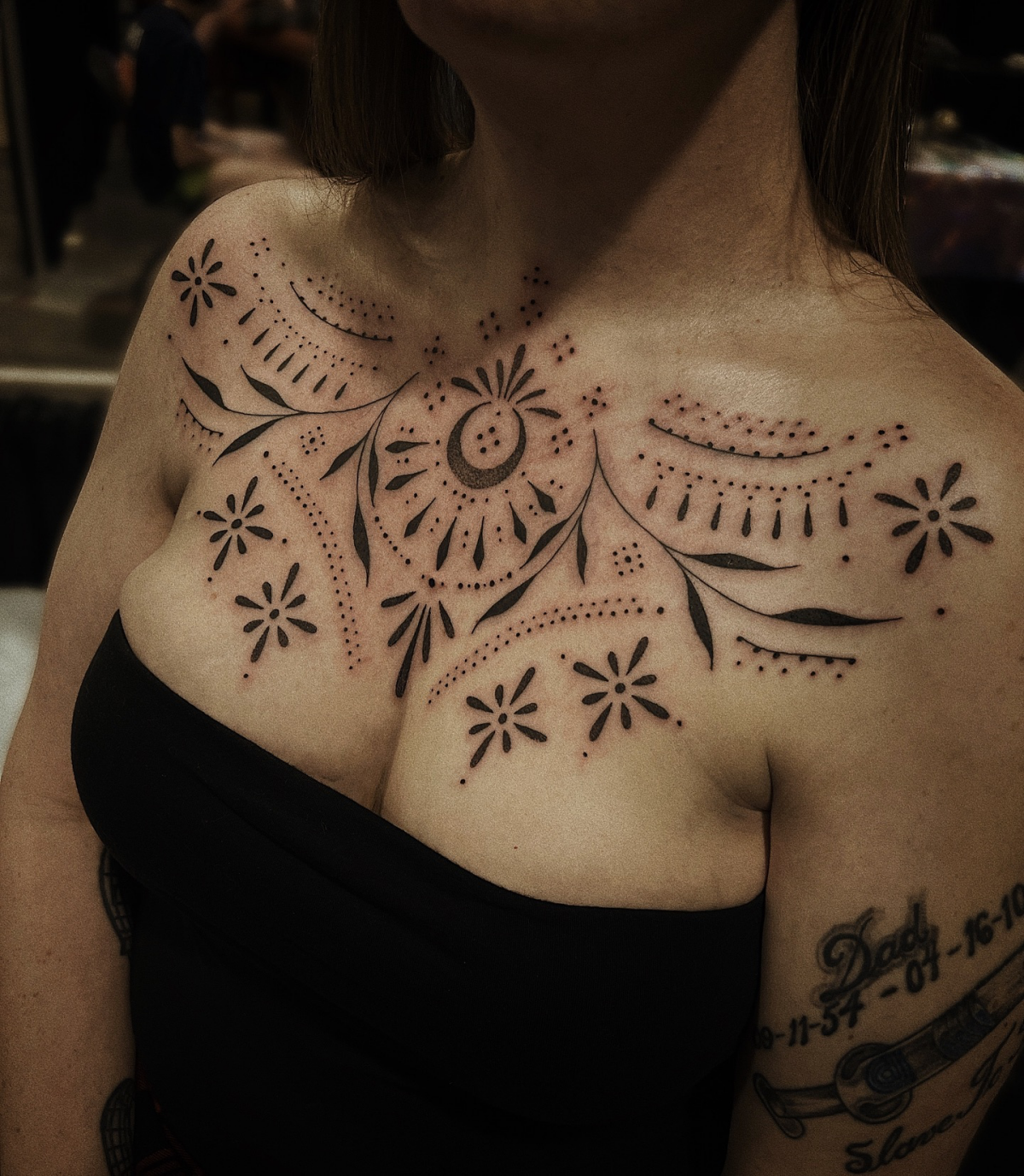
Oh yeah, and what about scars or stretch marks? It’s definitely possible to tattoo over them, but it’s a specialized skill. Scar tissue is tricky; sometimes it soaks up ink perfectly, and other times the ink
Inspiration Gallery
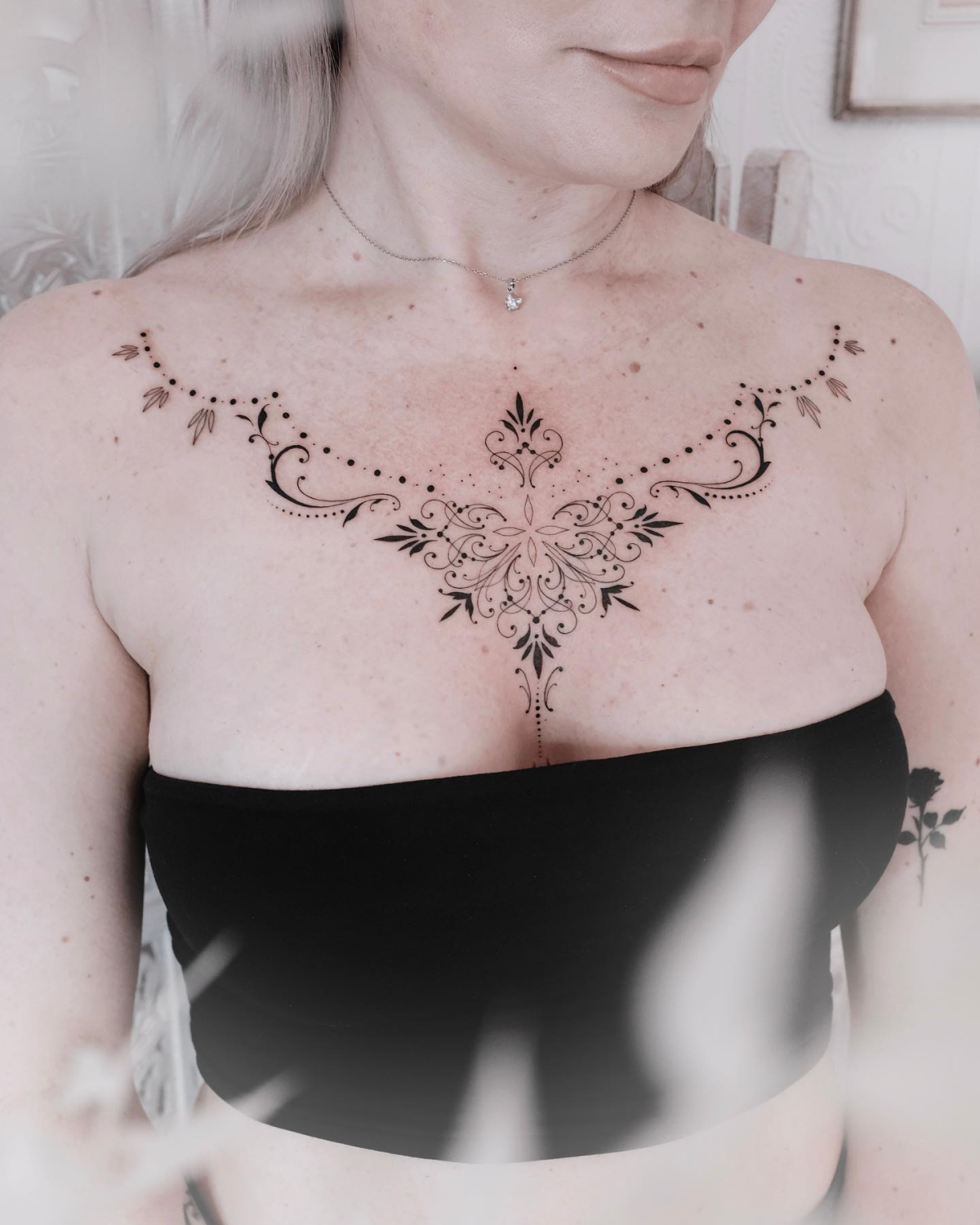
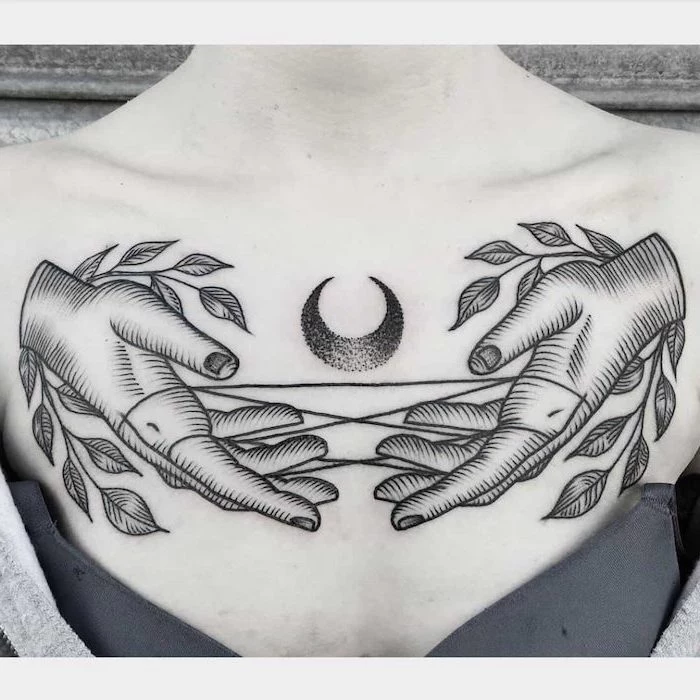
When healing a chest tattoo, sleep on your back. This prevents your sheets from rubbing against the fresh ink and sticking to the plasma, which can pull out ink and damage the design. Propping yourself up with pillows can stop you from rolling over in your sleep.
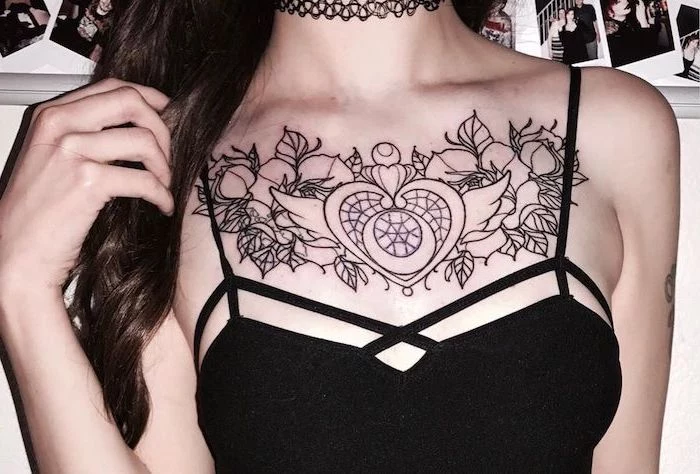
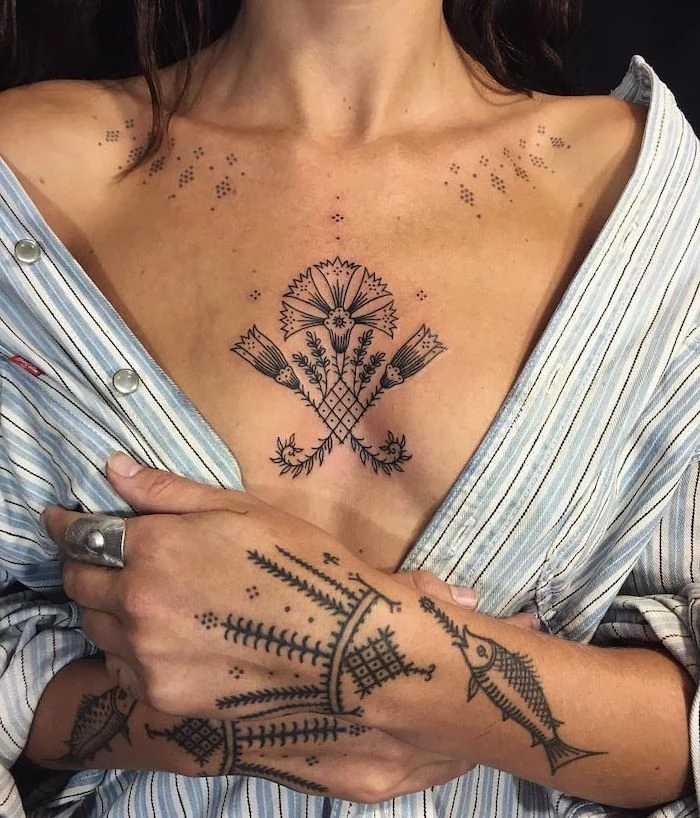
- Check their portfolio for healed chest pieces, not just fresh ones.
- Ensure their style matches your vision (e.g., fine line, traditional, ornamental).
- Read reviews focusing on their professionalism and studio cleanliness.
- Have a consultation to see if your personalities click. You’ll be spending hours together.
The secret? Finding an artist isn’t just about skill; it’s about finding a partner for a permanent project.
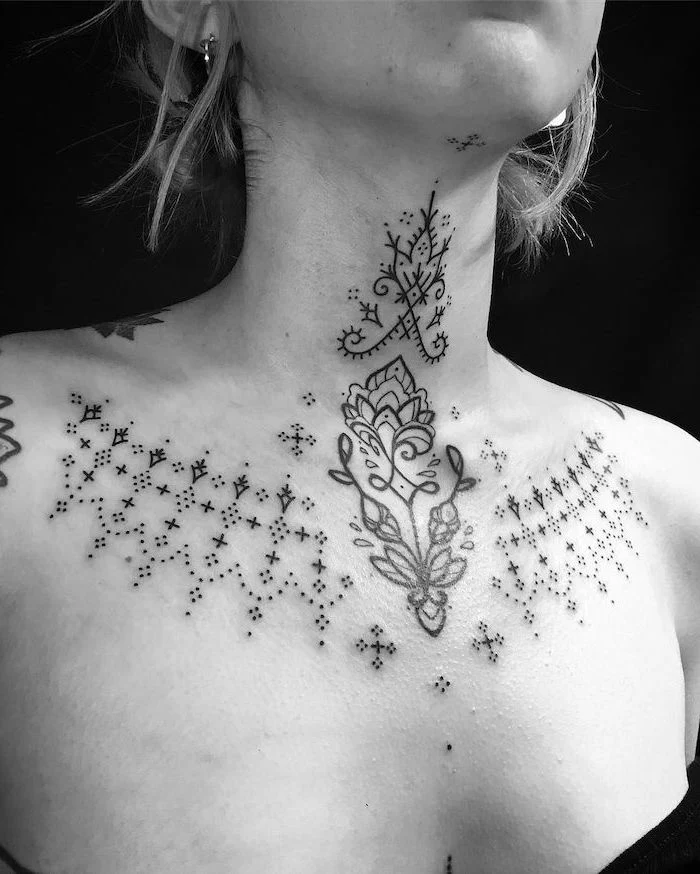
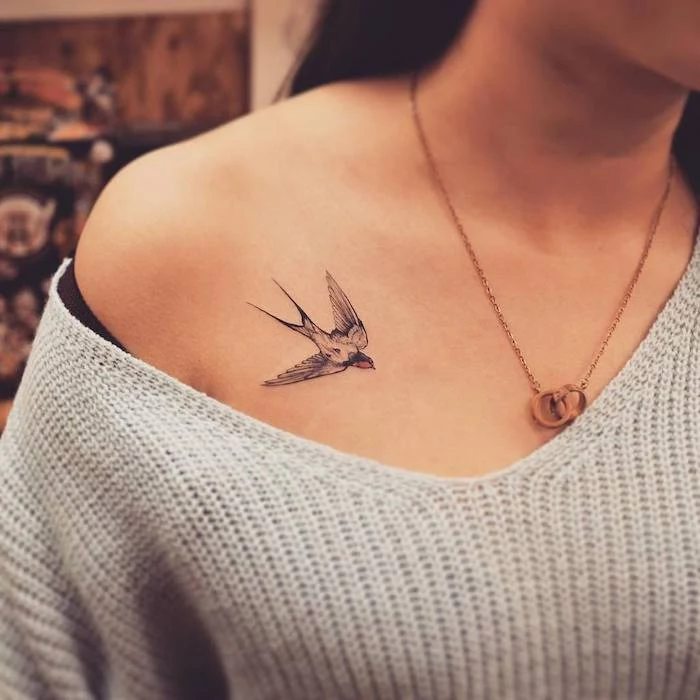
The skin on the décolletage is thinner and has fewer oil glands than other parts of the body, making it more prone to premature aging and sun damage.
This means long-term care for a chest tattoo is non-negotiable. A high-SPF sunscreen, like EltaMD UV Clear Broad-Spectrum SPF 46, should become your best friend. Apply it daily, even on cloudy days, to keep your lines sharp and colors vibrant for decades.
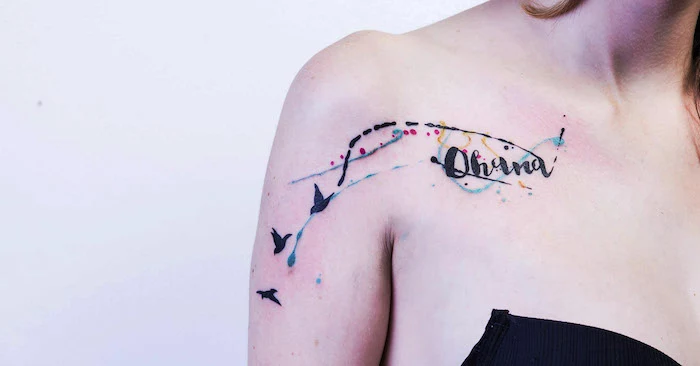
Symmetry is a statement: A perfectly centered design, like a mandala on the sternum or mirrored swallows on the collarbones, creates a powerful, architectural look. It requires an artist with extreme precision, as even a millimeter off can be noticeable.
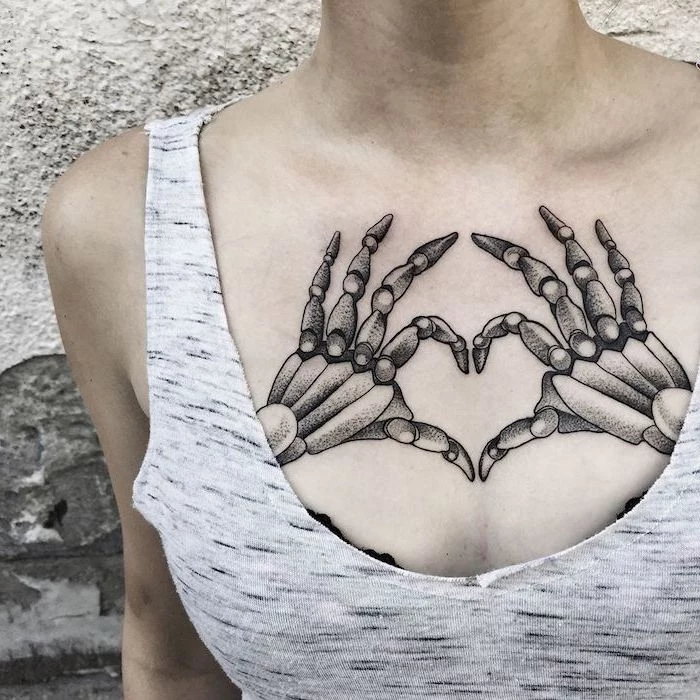
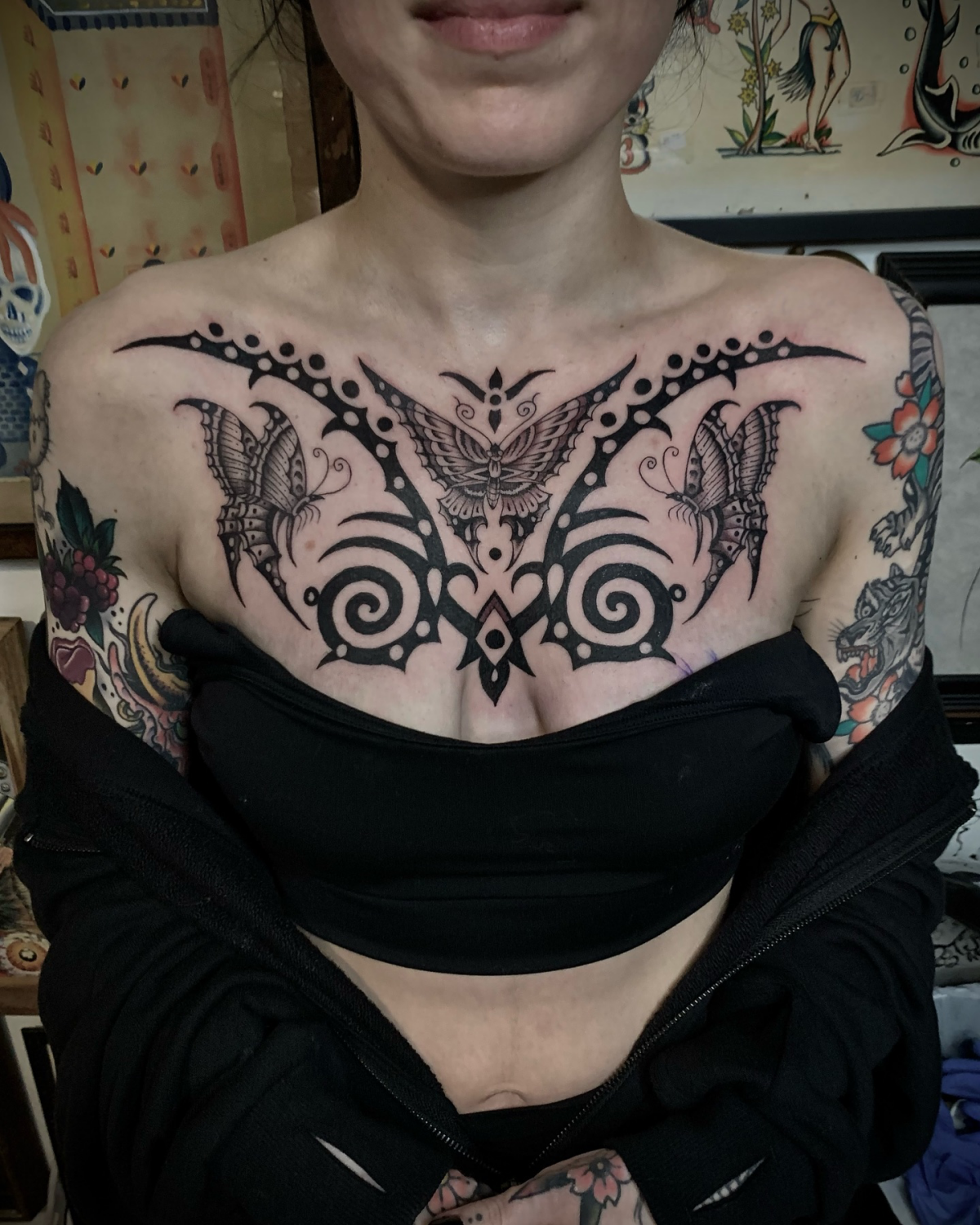
Wondering what to wear for your appointment?
Comfort and accessibility are key. A zip-front hoodie, a button-down shirt you can wear backward, or a bikini top/strapless bandeau are all excellent choices. They allow the artist easy access to the area without you having to be completely topless, making the experience much more comfortable.
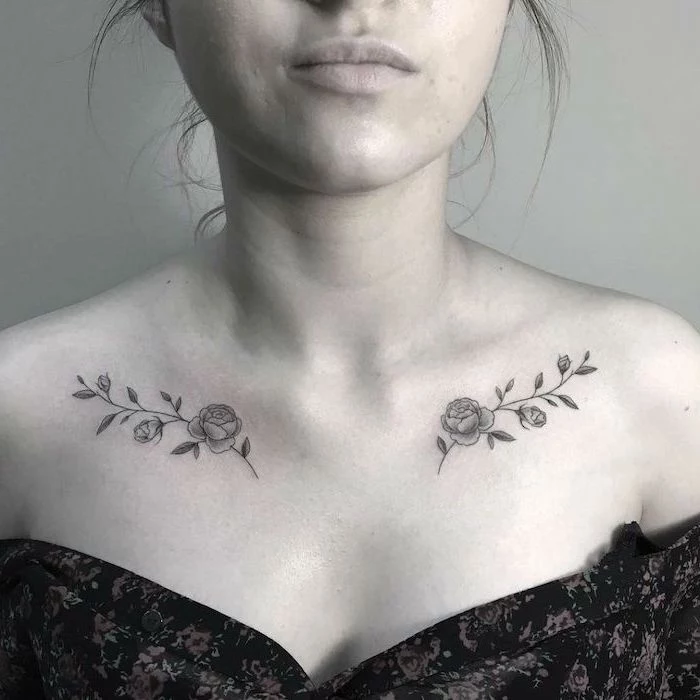
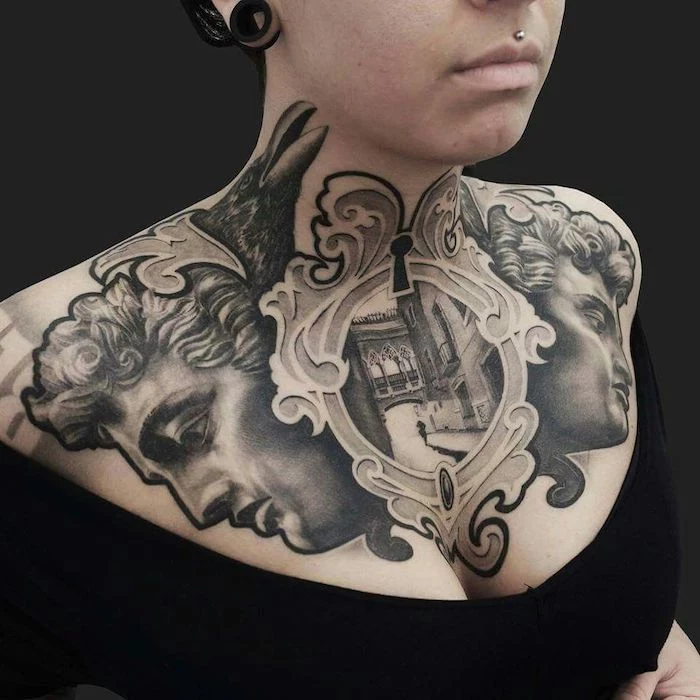
Thinking about how your tattoo will flow with the body is crucial. A great artist won’t just place a flat image on you. They’ll use the pectoral muscles to give a design dimension, curve a piece under the collarbone to accentuate it, or use the sternum as a natural line of symmetry. Discuss anatomy and flow during your consultation.
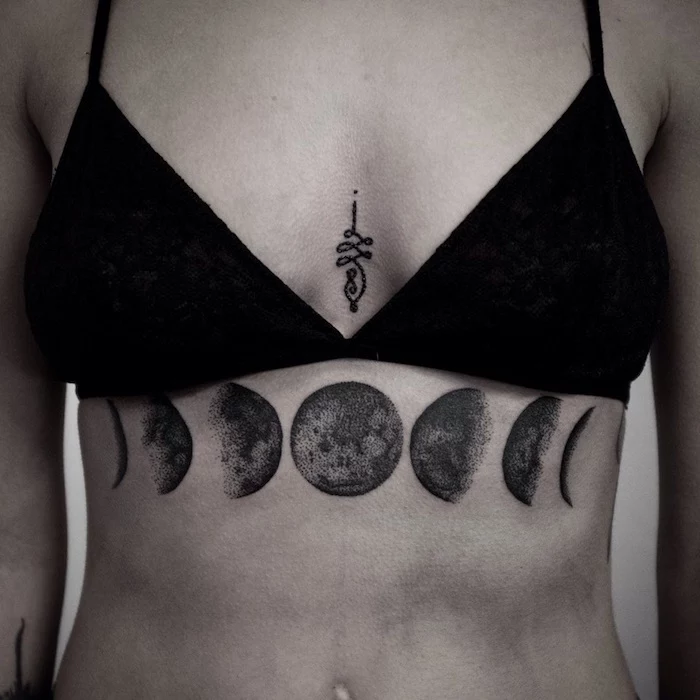
- Enhances the body’s natural V-shape.
- Can feel deeply personal and close to the heart.
- A powerful spot for making a bold artistic statement.
The key to these benefits? Choosing a design that truly respects and follows your unique anatomy.
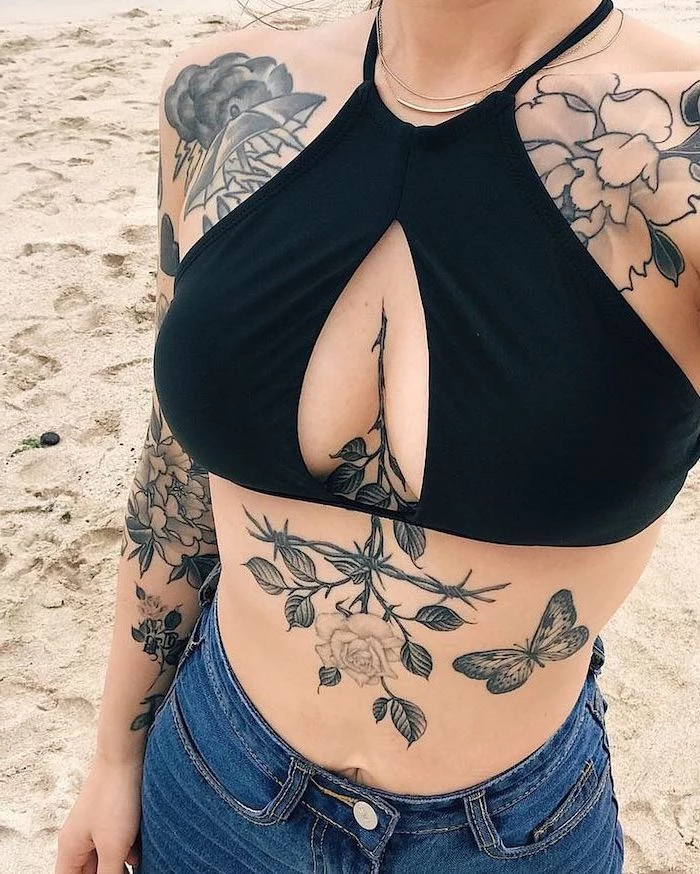
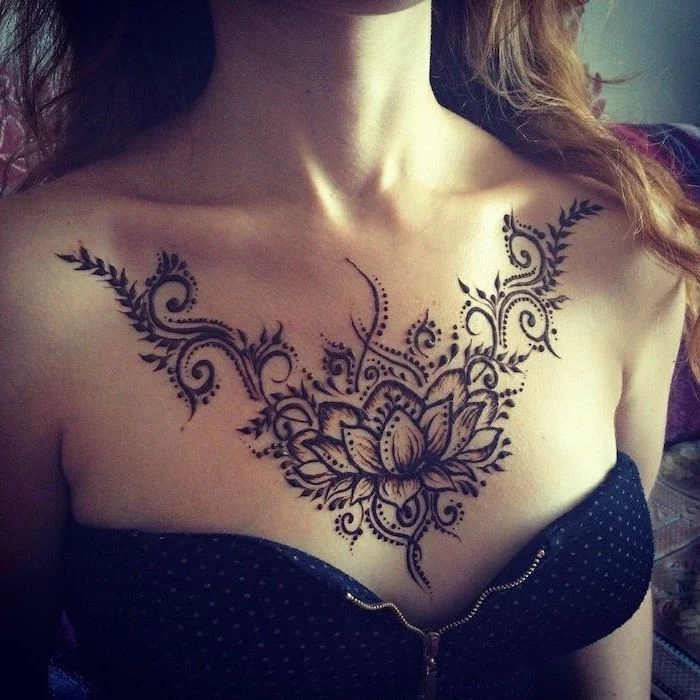
Second Skin Bandages: Products like Saniderm or Recovery Derm Shield create a breathable, protective barrier over your new tattoo. For a chest piece, this is a game-changer. It protects the tattoo from friction from clothes and sheets, drastically simplifying the first few days of healing.
Traditional Healing: This involves washing the tattoo multiple times a day and applying a thin layer of ointment, like Aquaphor or a specialized product like Hustle Butter Deluxe. It requires more diligence, especially in such a high-friction area.
Many artists now swear by second-skin methods for chest tattoos due to their convenience and protective qualities.
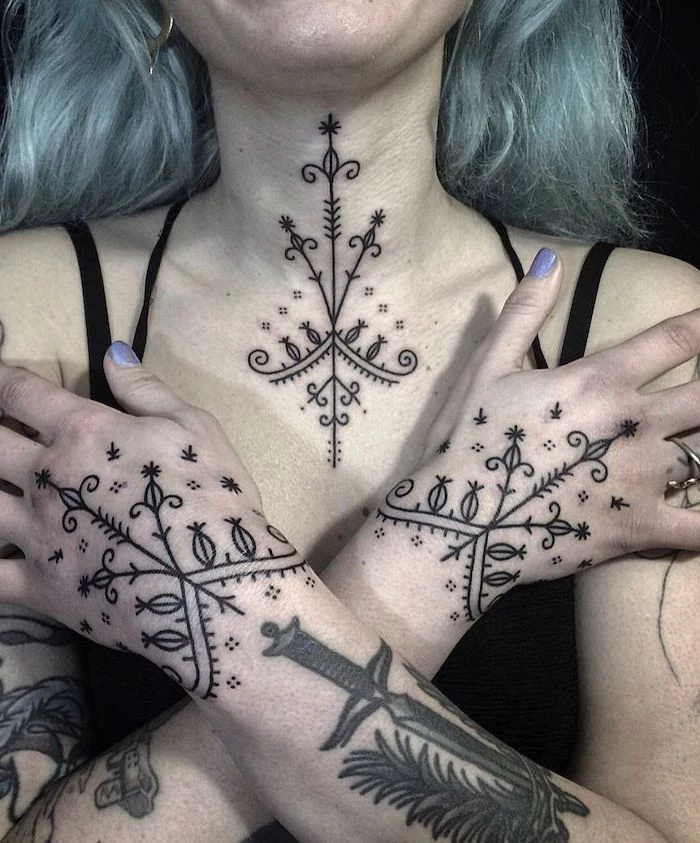
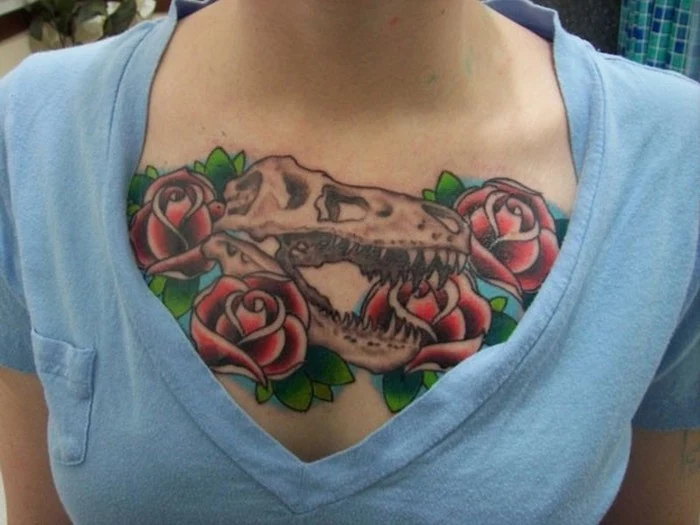
A survey by Dalia Research found that while 75% of people with tattoos don’t regret them, the most common reason for regret among the other 25% was that they chose a design they no longer identified with.
For a chest piece, which is so prominent, this is a critical warning. Choose timeless symbolism over fleeting trends. A design that is deeply personal is far less likely to become a source of future regret.
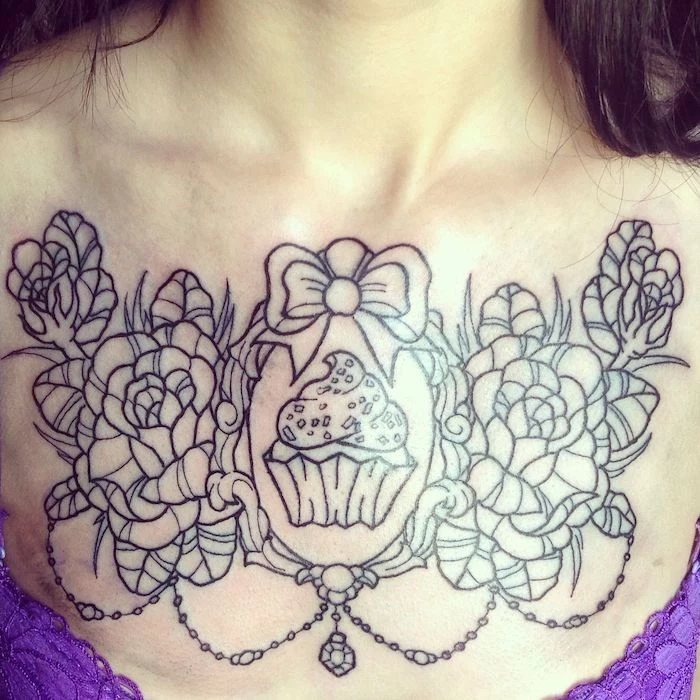
Don’t underestimate the mental game. The sound and sensation of a needle on the sternum can be jarring. Many people find that noise-canceling headphones with a good podcast or a calming playlist are just as important as any physical preparation for getting through the session.
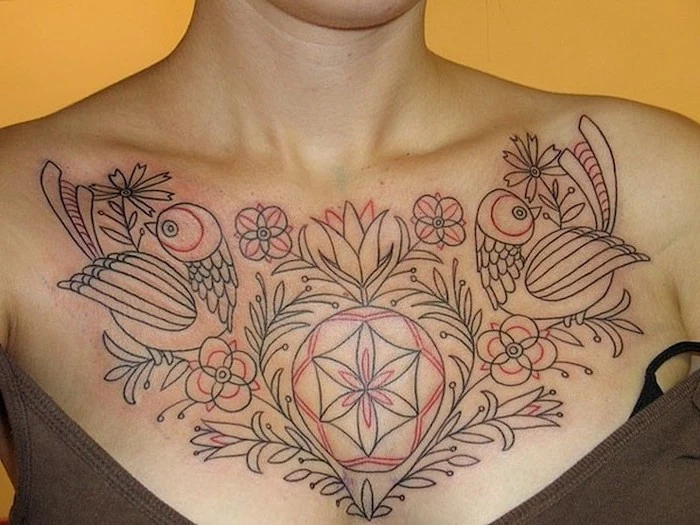
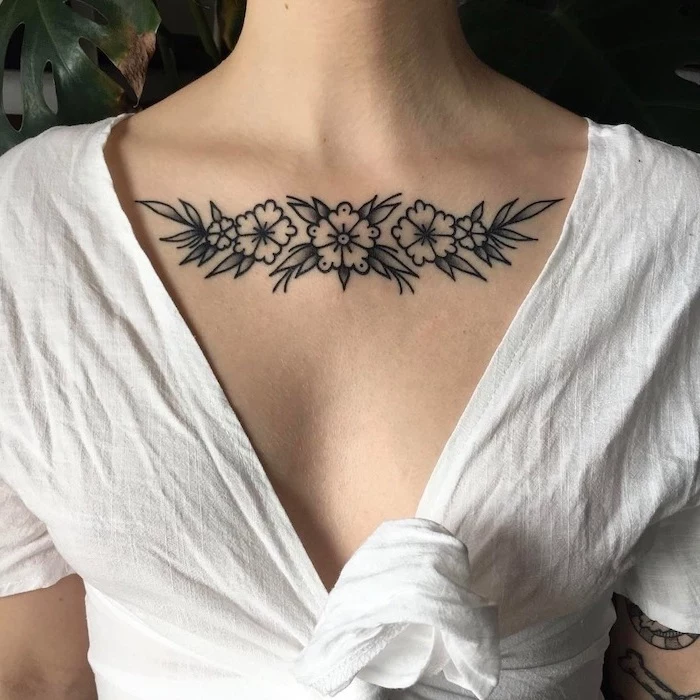
A common mistake: Going too small. A tiny, intricate design might look great up close, but from a distance, it can become an unreadable smudge on the broad canvas of the chest. Be open to your artist’s advice on scaling the design appropriately for the placement so it has lasting visual impact.
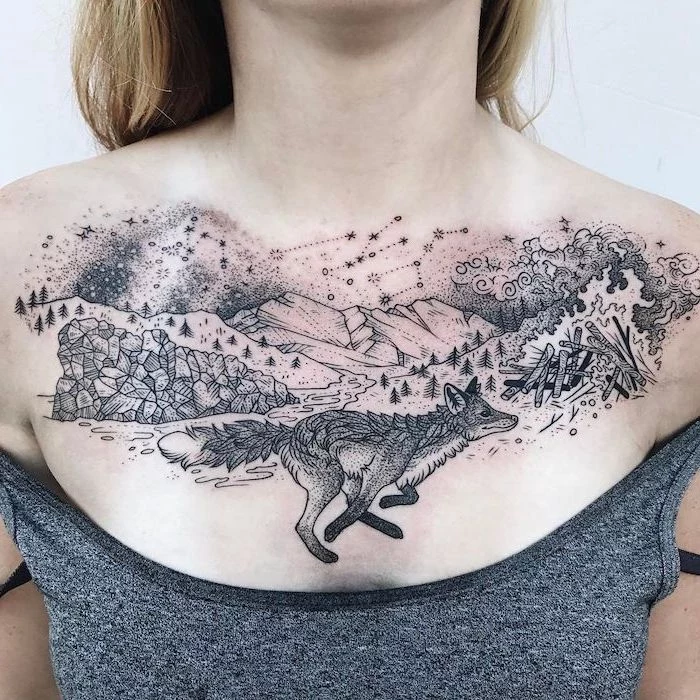
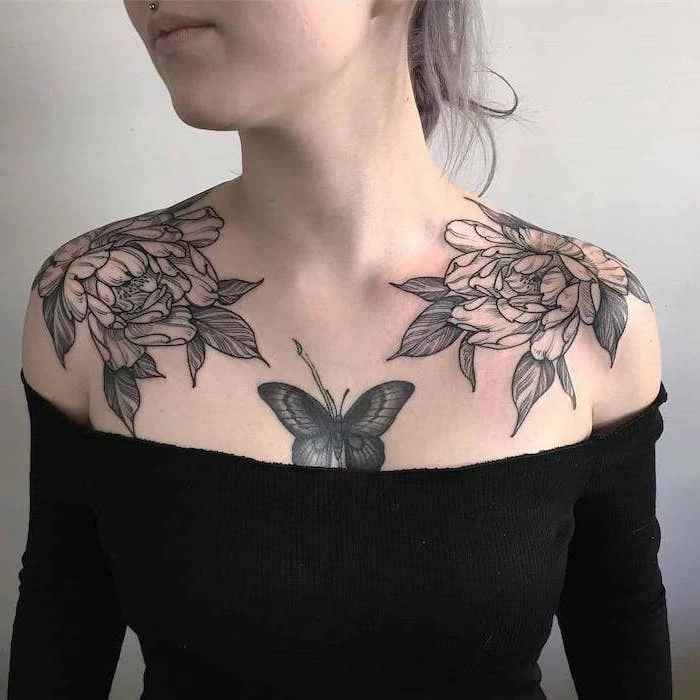
Consider the future. The skin on the chest can change significantly with weight fluctuations or pregnancy. A design that is too rigid or geometric might be more susceptible to distortion. More organic designs, like florals or flowing patterns, tend to be more forgiving of life’s changes.
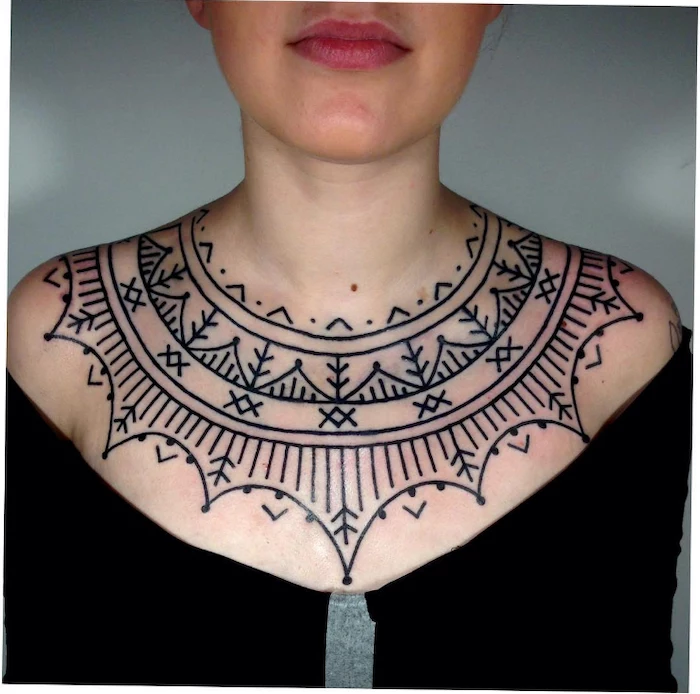
Can you work out after getting a chest tattoo?
You should wait at least a week, and possibly two. The chest area is involved in countless movements. Excessive sweating can irritate the tattoo and create a breeding ground for bacteria, while stretching from exercises like bench presses or push-ups can pull at the healing skin, potentially causing ink to fall out or lines to blur.
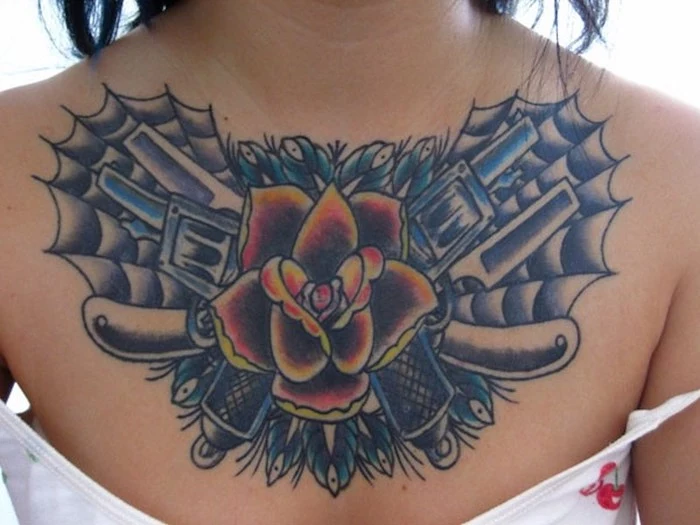
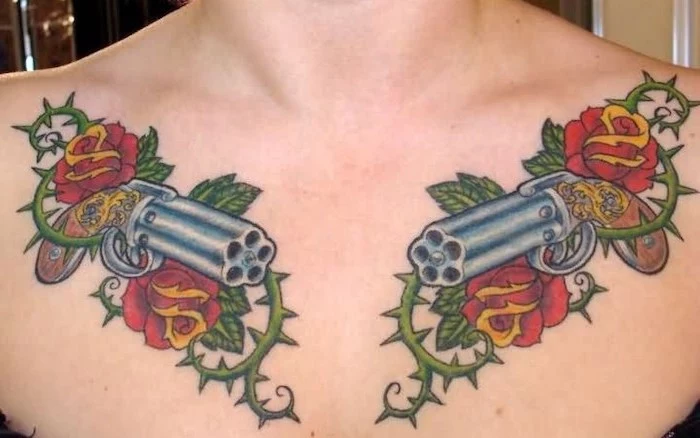
- Fine-Line: Delicate and subtle, perfect for intricate florals or script. Best for those who want an elegant, less imposing piece. Can require more frequent touch-ups over the years.
- Bold Traditional: Features thick black outlines and a saturated color palette. These designs are built to last and look great from a distance. A timeless choice for a powerful statement.
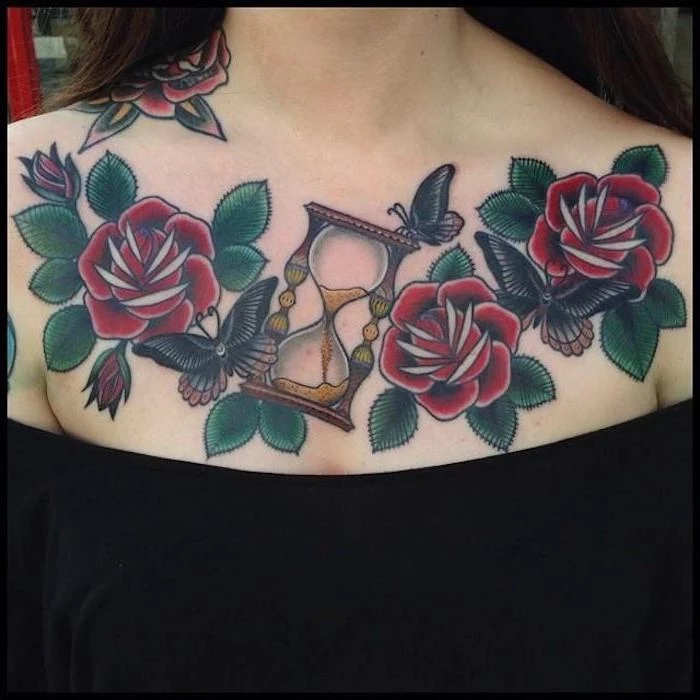
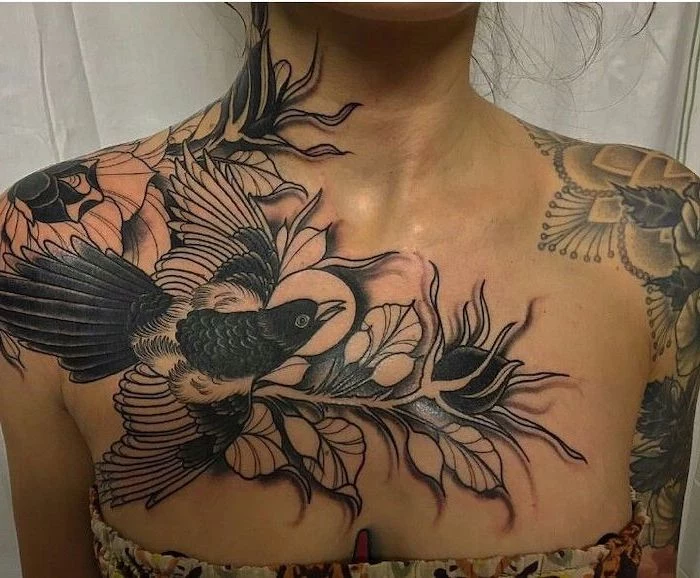
The sternum is a focal point, drawing the eye to the center of the body. Designs placed here often carry significant personal meaning—it’s a way of literally holding something close to your heart. Think protective symbols, memorial pieces, or designs representing core personal values.
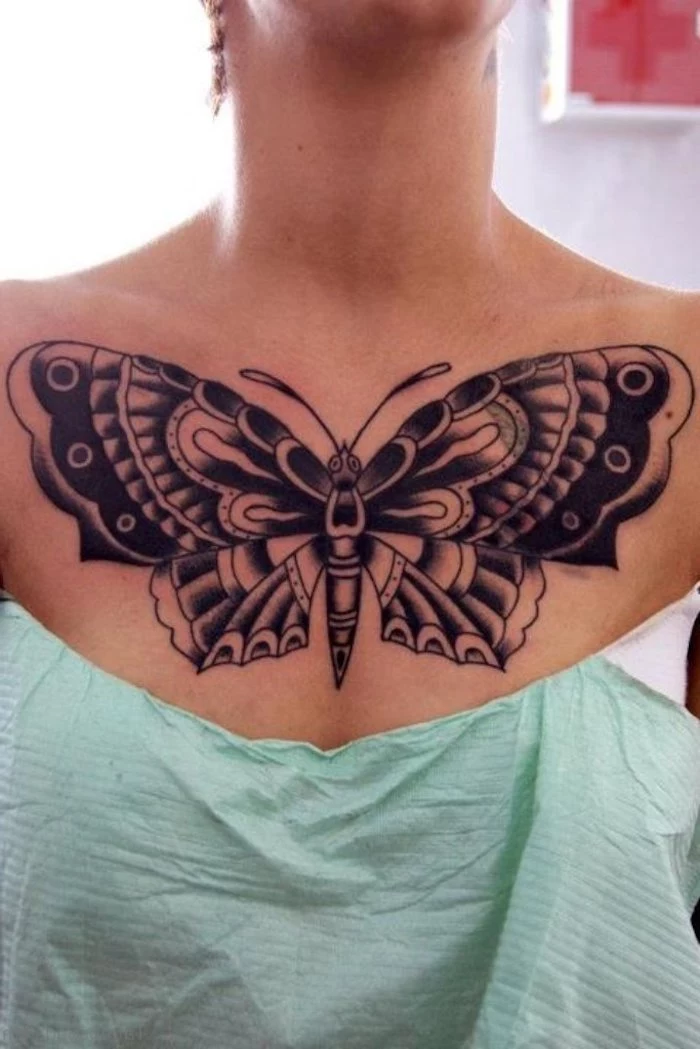
The ‘underboob’ or ‘sternum chandelier’ tattoo, popularized around 2015 by celebrities like Rihanna, redefined the chest piece for a new generation, blending sensuality with ornamental art.
This trend highlighted how a chest tattoo doesn’t have to be a single, solid piece. It can be a collection of elements that work together, extending below the bust line to create a larger, more intricate composition that complements lingerie and low-cut tops.
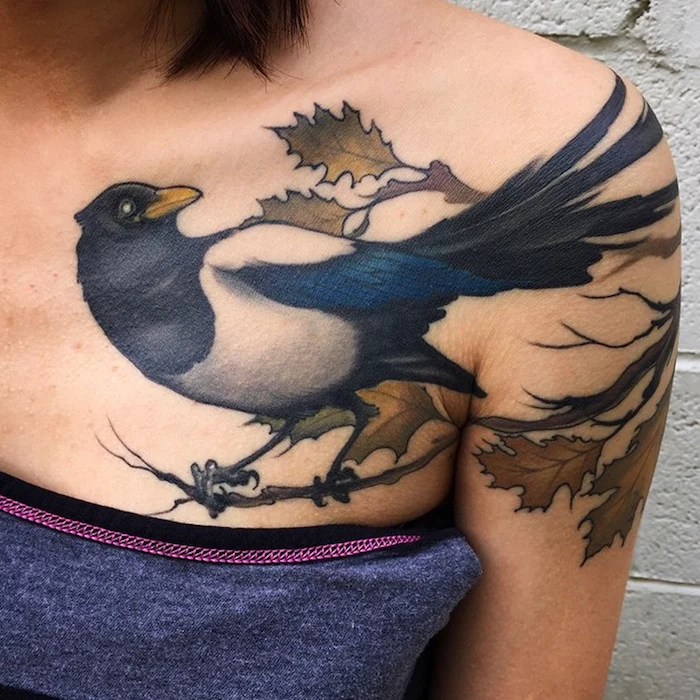
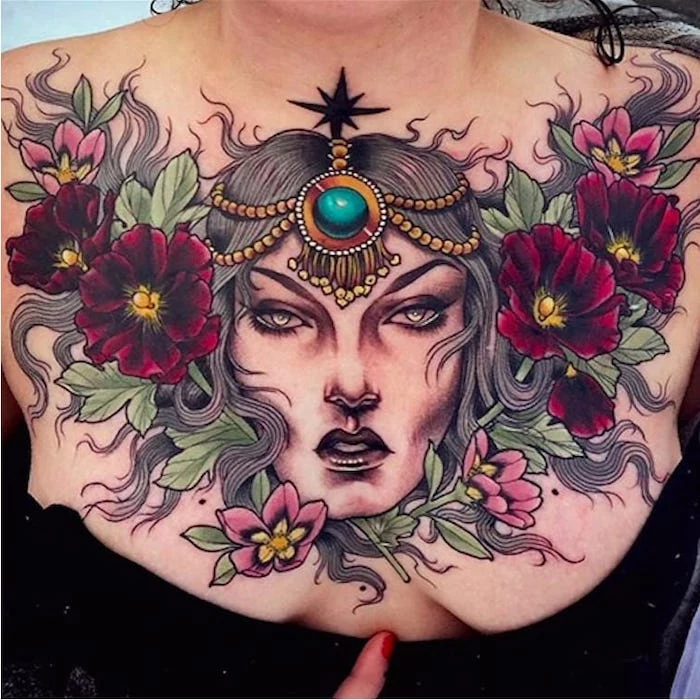
The choice between black and grey or full color is a major decision for a chest piece. Black and grey often emphasizes form, shadow, and texture, giving a classic, sculptural feel. Color can bring a design to life, conveying emotion and vibrancy, but it may require more diligent sun protection to prevent fading over time.
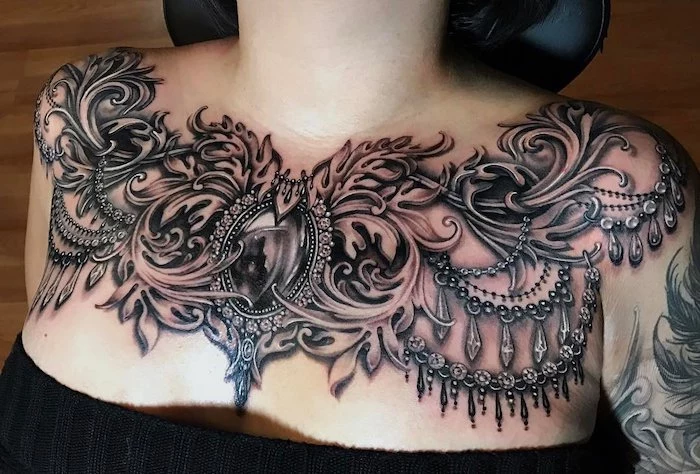
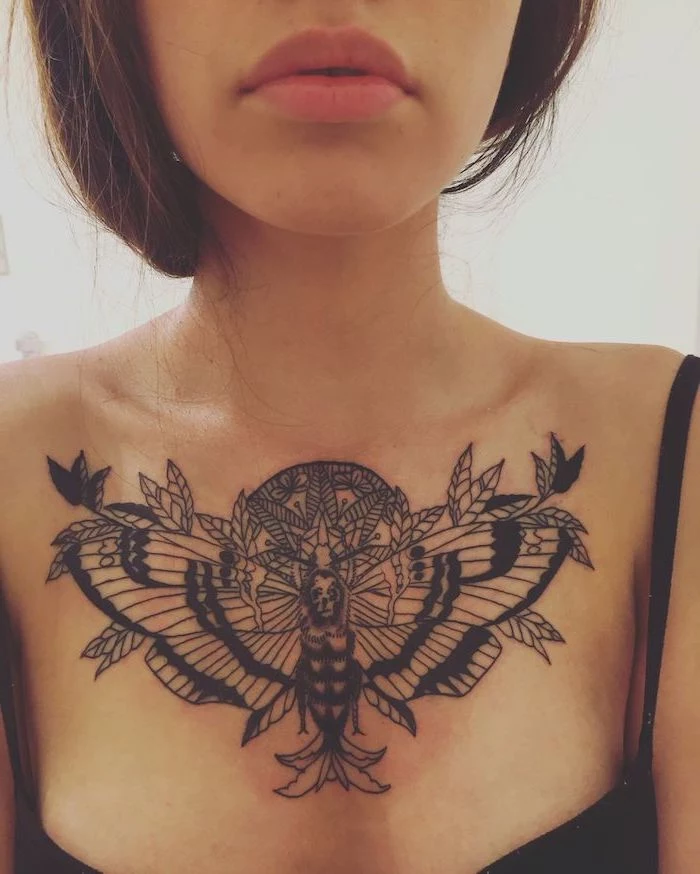
Important point: Check your stencil from all angles. Stand up, sit down, slouch, and stand tall. The chest is not a flat surface, and a design that looks straight when you’re lying on the tattoo bed might look crooked the second you stand up. A good artist will insist on this pre-tattoo check.
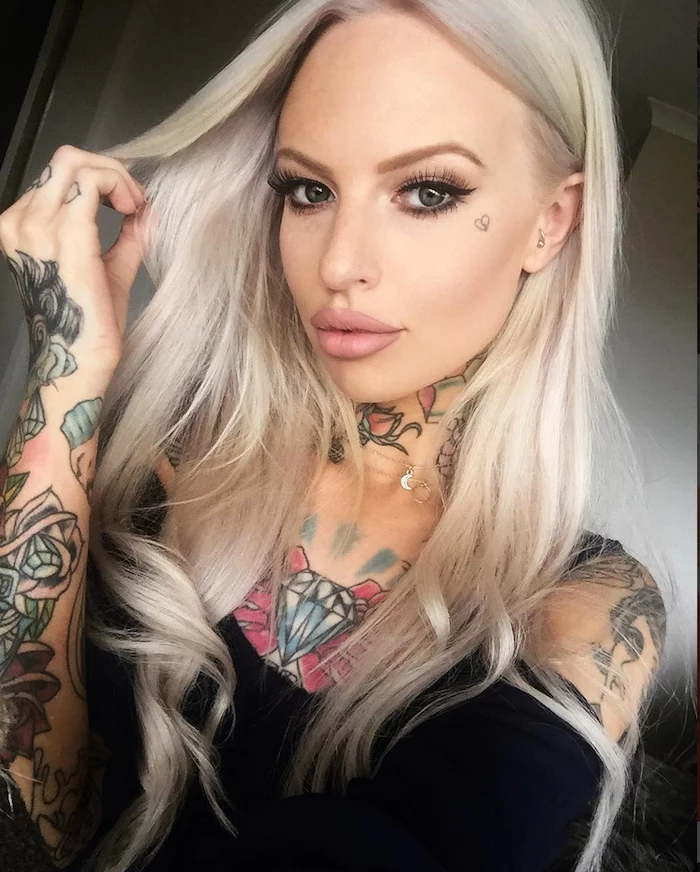
What about touch-ups? Is it normal?
Yes, especially for a chest piece. The constant small movements of the area and friction from clothing can sometimes cause minor inconsistencies during healing. Most artists include a free touch-up session within the first few months to perfect any lines or shading that didn’t heal flawlessly.
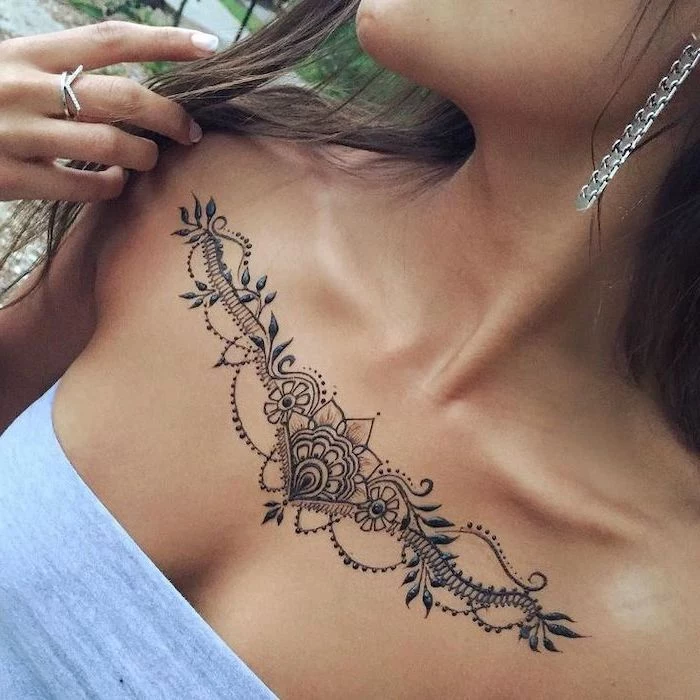
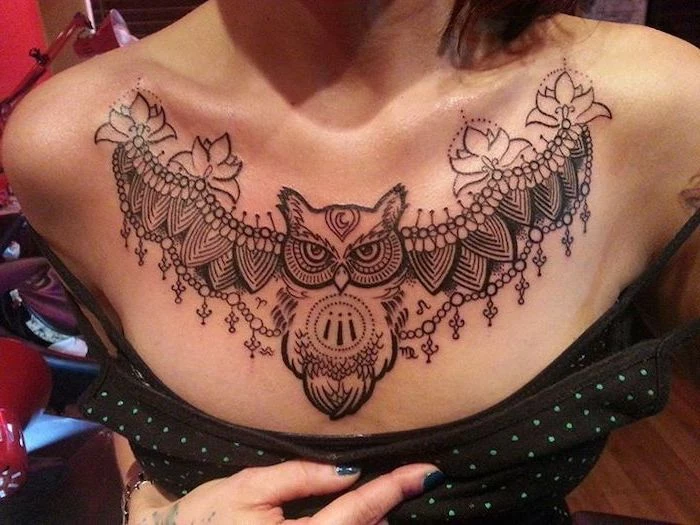
- Do not submerge it in water (no baths, swimming pools, or hot tubs) for at least 2-3 weeks. Showers are fine.
- Avoid direct sun exposure on the healing tattoo. Once healed, use sunscreen religiously.
- Wear loose, soft clothing. A tight bra strap or rough fabric can ruin a new tattoo.
- Don’t pick or scratch the scabs, no matter how much they itch. Let them fall off naturally.
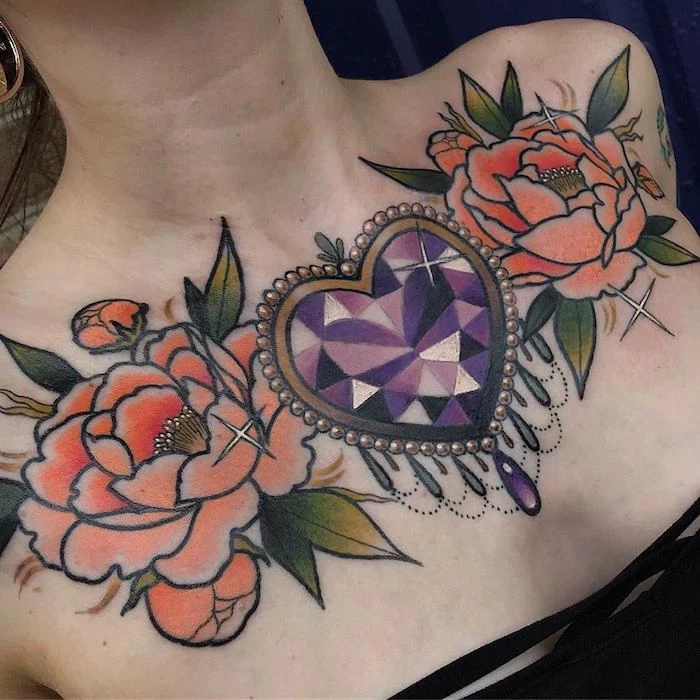
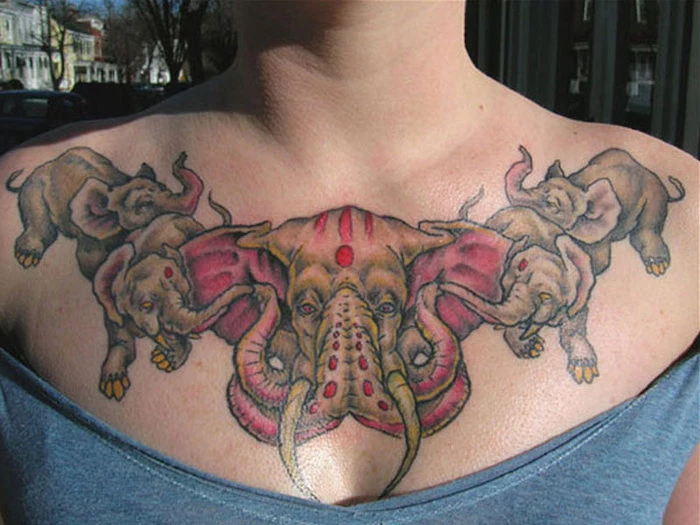
Vegan inks are becoming the industry standard. Brands like World Famous Ink, Eternal Ink, and Dynamic Color offer high-quality, cruelty-free options that are just as vibrant and long-lasting. If this is important to you, just ask your artist—chances are they’re already using them.
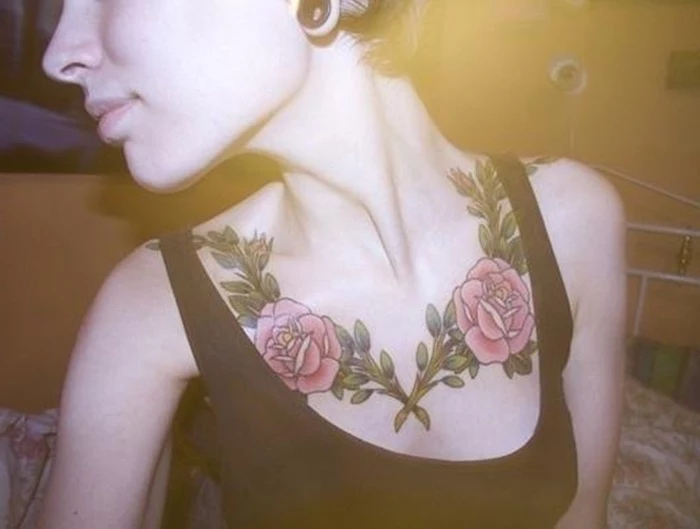
Historically, chest plates in many cultures, from the Maori ‘Ta Moko’ to Japanese ‘Irezumi’, were symbols of status, bravery, and tribal identity.
Getting a chest tattoo connects you to a long lineage of powerful body art. It’s more than just decoration; it’s a placement historically reserved for significant, story-telling pieces. Understanding this heritage can add another layer of meaning to your own design.

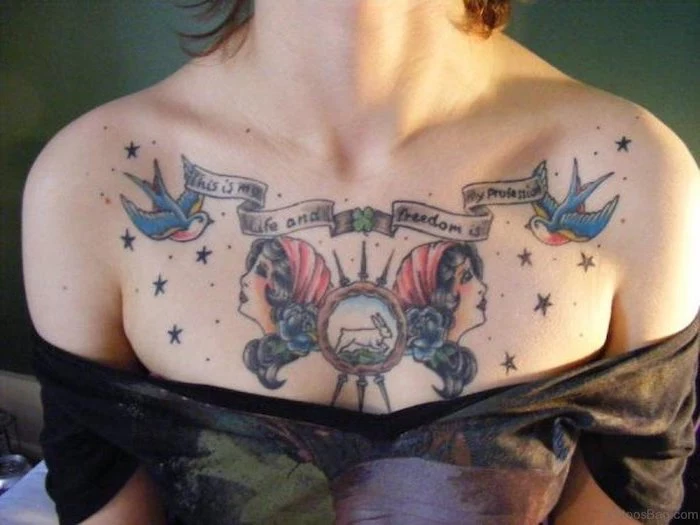
The pain isn’t uniform: Tattooing over the fleshy pectoral muscle is far more tolerable than on the collarbones or sternum. Expect the pain level to change dramatically as the artist moves across different parts of your chest. Be prepared for the bony areas and know that there will be moments of relief.
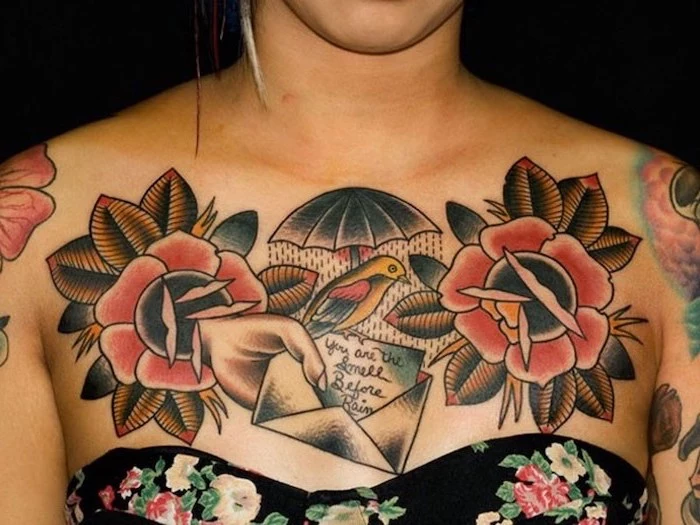
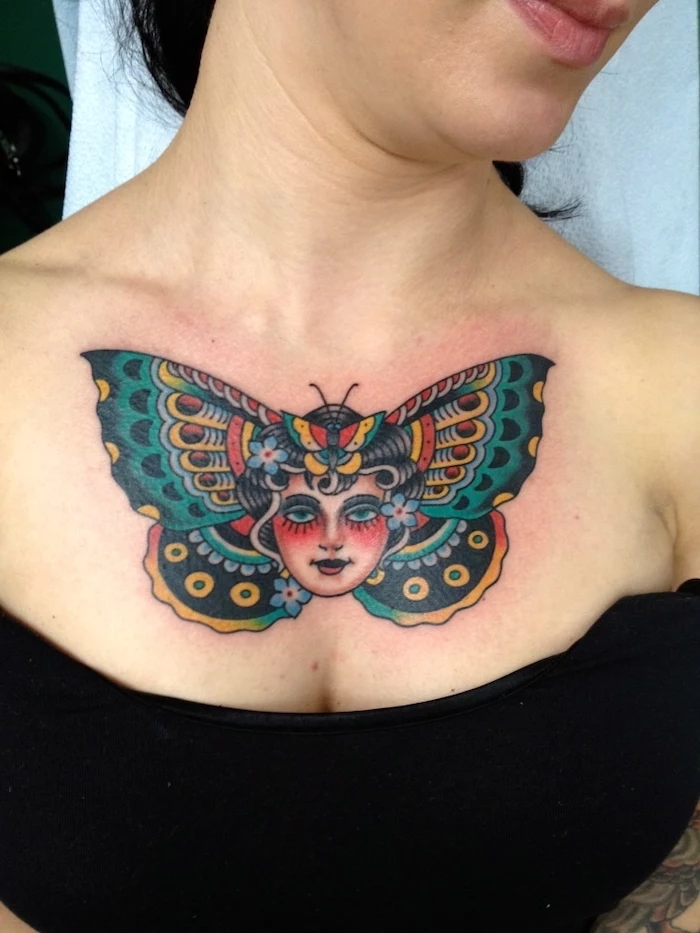
Don’t be afraid of negative space. A chest piece doesn’t have to cover everything. A skilled artist can use the un-tattooed skin as part of the design itself, creating a more balanced and breathable composition that feels less heavy and more integrated with your body.
Thinking about cost? A quality chest piece is an investment. You’re paying for an artist’s skill, experience, hygiene standards, and years of artistic development. A full chest piece can range from $800 to $4,000+ depending on size, detail, and the artist’s reputation. Remember: good tattoos aren’t cheap, and cheap tattoos aren’t good.

